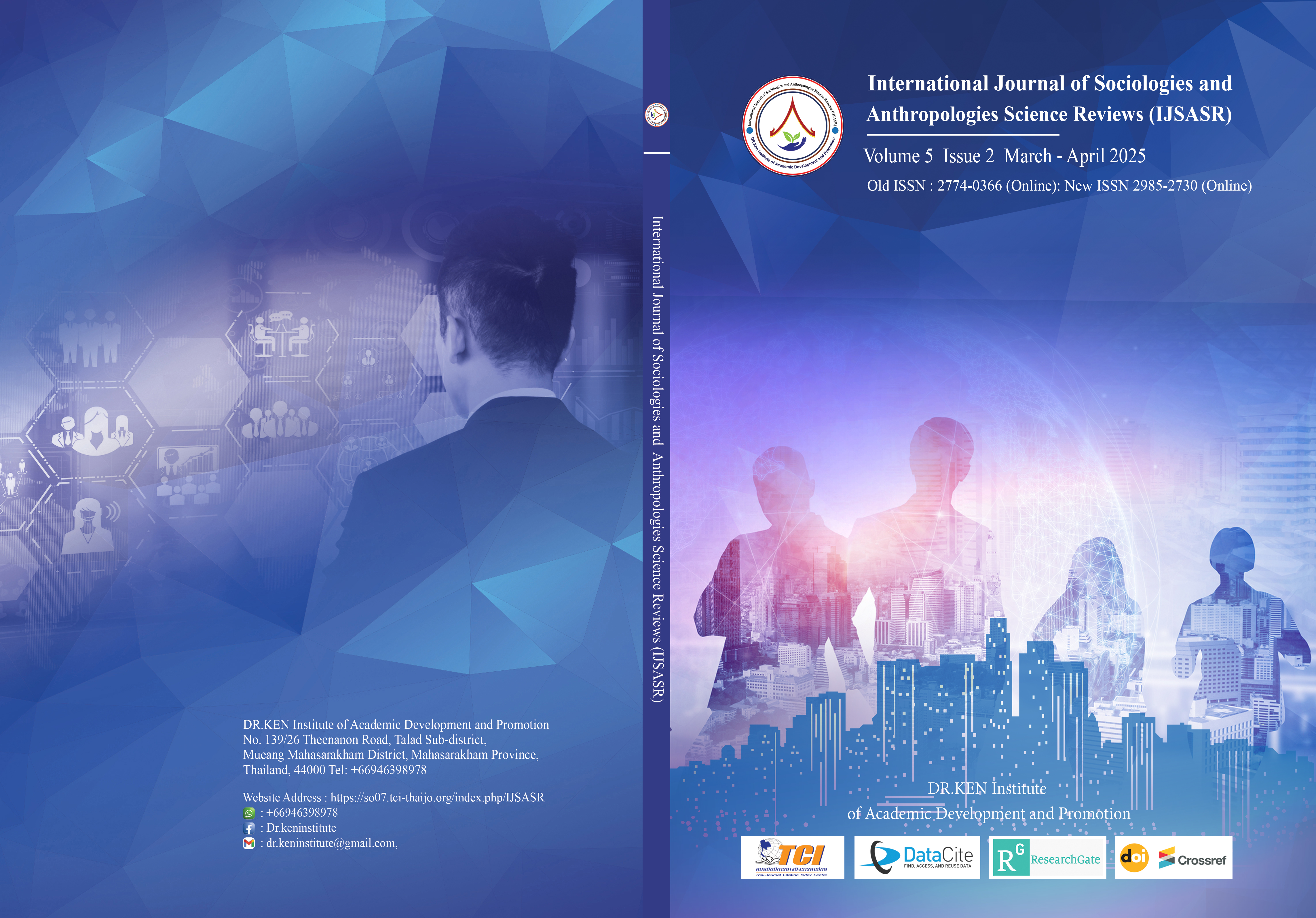Guidelines for Gymnasium Management of Tianhe District Guangzhou City the People’s Republic of China
Main Article Content
Abstract
Background and Aim: The facility that people are very interested in right now and which has quite a bit of problems in the current era is the Tianer County Gymnasium because this gymnasium is not perfect in its condition. The gymnasium may be too old, and in rather dilapidated condition, the equipment inside the gymnasium is incomplete, waiting for repairs to bring it up to date and be able to be used completely by those requesting to use it. The Objective is qualitative research and aims to present a guideline for study and create guidelines for Gymnasium Management in Tianhe district China.
Materials and Methods: The research interviewed 19 experts with a theory of Bridge and Roquemore planning, organizing, Implementing, and controlling. The sample of purpose was 19 persons. The present presidents of sports were current or experienced 4 persons. Gymnasium management working for 3 years were 5 persons, Gymnasium operators with 3 years of experience, 5 persons, and 5 persons who use the service with at least 3 years of experience. The 5-level estimation data were sent to experts in rounds 2 and 3 to conduct a focus group to find consensus, confirm the guidelines, and summarize the guidelines Delphi technique research uses the median and Interquartile (IR).
Results: The study and the creation of management guidelines for Tianhe City Gymnasium in Planning (Manager) that 1. strategic plan 2. policy 3. SWOT (Person) 4. People suitable for the job 5. Develop 6. Discipline (Academics) 7. Work reform 8. Training 9. Research 10. Work visits (Budget) 11. Plan budget use 12. Materials and equipment 13. income and expenses Organization (Manager) that 1. Structure 2. Marketing mix 3. Take care of users (Person) 4. Work teams 5. Safety department 6. Emergency Unit (Academic) 7. Organizing of structure 8. Provide income (Budget) 9. Budget structure 10. Worker bonus Implementing (Manager) that 1. Appoint a supervisor 2. Networking 3. Use of foreign languages (Person) 4. Professional 5. Honest and polite 6. Know the Innovation area (Academic) 7. Used current innovations 8. Accept change 9. Develop yourself (Budget) 10. Study income and expenses 11. Analyze income and expenses. Controlling (Manager) that 1. process evaluation system 2. Monitor and inspect 3. Promote Employees (Person) 4. Assess progress 5. Learn to evaluate 6. Practice evaluating (Academics) 7. Learn theory and practice 8. Solve problems into (Budgets) 9. Know financial regulations 10. Study to financial 11. Protect the organization's interests.
Conclusion: The management guidelines for Tianhe City Gymnasium focus on creating a strategic plan, establishing policies, and conducting a SWOT analysis during the planning phase. Organizational aspects include structuring, marketing, user care, and budgeting. Implementation covers appointing supervisors, networking, and embracing innovation. Controlling involves evaluating processes, monitoring performance, and adhering to financial regulations. This comprehensive approach ensures the gymnasium operates efficiently, meets community needs, and remains financially sustainable.
Article Details

This work is licensed under a Creative Commons Attribution-NonCommercial-NoDerivatives 4.0 International License.
Copyright on any article in the International Journal of Sociologies and Anthropologies Science Reviews is retained by the author(s) under the under the Creative Commons Attribution-NonCommercial-NoDerivatives 4.0 International License. Permission to use text, content, images, etc. of publication. Any user to read, download, copy, distribute, print, search, or link to the full texts of articles, crawl them for indexing, pass them as data to software, or use them for any other lawful purpose. But do not use it for commercial use or with the intent to benefit any business.

References
Abers. J. S. (2020). Principles and Guidelines for organizing the Gymnasium for activity. SZ. 2023-048.
Bridges, F. J., & Roquemore, L. L. (2019). Management for Athletic. Sports Administration.
Dai, F. (2012). Characteristics and analysis of techniques for organizing gyms and fields. Contemporary Sports Technology, 66(3), 87-89.
Ding, C. (2018). Study the process of organizing facilities for community service. Sports Culture Guide, 30, 51-53.
Diny, L. (2018). Research on the characteristics of proper budget management. Charming China, 6, 78-79.
Du, C. (2017). A review of the theoretical basis and application Guidelines of representational Use of building for Utility purposes. Contemporary Sports Science and Technology, 48(6), 88-89.
Fan, T. (2019). Sports stadium management research for community service. Journal of Physical Education, 80, 61-63.
Gao, D. (2023). A study on the Guidelines on the Delphi method and hierarchical analysis of social sports science. Journal of Tianjin Institute of Physical Education, 2, 214-219.
Gao, Q. (2022). Field Guidelines for Contemporary Sports Technology Exercise. Journal of Nanjing Institute of Physical Education, 30, 188-196
Griffen, Y. K. (2019). A conspectus of management control theory for Facilities Severe. Journal of Beijing Sport University, 23(1) 266-270.
Ling, M. (2021). A study on restoring the field organizing village activity. Modern Vocational Education, 5, 72-82.
Qiao, F. (2023). The construction of the evaluation index system of construction of the village and the environment. Journal of Beijing Sport University. 5, 51-59.
Wang, Z. (2021). The potential space for the development of creating agile for competition. Physical Education, 4(18), 30-39.
Xie, L. (2021). Studying the image of exercise location of Chinese gymnasium Activity of China. (CGAC) Beijing University.
Zhang, L. (2020). Research development in the organization for Natural Science Education. Journal of Physical Education. 18(5), 93-100.






